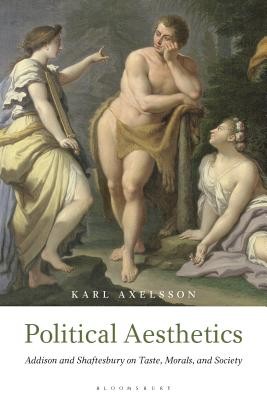
- We will send in 10–14 business days.
- Author: Karl Axelsson
- Publisher: Bloomsbury Publishing PLC
- ISBN-10: 1350077755
- ISBN-13: 9781350077751
- Format: 15.6 x 23.4 x 1.8 cm, kieti viršeliai
- Language: English
- SAVE -10% with code: EXTRA
Reviews
Description
Providing a gateway to a new history of modern aesthetics, this book challenges conventional views of how art's significance developed in society.
The 18th century is often said to have involved a radical transformation in the concept of art: from the understanding that art is tool for some practical purpose, to the modern belief that it holds a distinctive and intrinsic value. By exploring the ground between these notions of art's function, Karl Axelsson reveals how scholars of culture made taste, morals, and a politically stable society an integral part of their claims about the experience of nature and art.
Focusing on the writings advanced by two of the most prolific men of letters in the eighteenth century, Joseph Addison (1672-1719) and the third Earl of Shaftesbury (1671-1713) it contests the conviction that modern aesthetic autonomy was a reorientation in criticism and philosophy originally prompted by these two key figures in the history of aesthetics.
By re-examining the political relevance of Addison's and Shaftesbury's theories of taste, Axelsson shows that they were, first and foremost, seeking to fortify a natural link between the aesthetic experience and the consolidation of modern political society.
EXTRA 10 % discount with code: EXTRA
The promotion ends in 21d.17:36:36
The discount code is valid when purchasing from 10 €. Discounts do not stack.
- Author: Karl Axelsson
- Publisher: Bloomsbury Publishing PLC
- ISBN-10: 1350077755
- ISBN-13: 9781350077751
- Format: 15.6 x 23.4 x 1.8 cm, kieti viršeliai
- Language: English English
Providing a gateway to a new history of modern aesthetics, this book challenges conventional views of how art's significance developed in society.
The 18th century is often said to have involved a radical transformation in the concept of art: from the understanding that art is tool for some practical purpose, to the modern belief that it holds a distinctive and intrinsic value. By exploring the ground between these notions of art's function, Karl Axelsson reveals how scholars of culture made taste, morals, and a politically stable society an integral part of their claims about the experience of nature and art.
Focusing on the writings advanced by two of the most prolific men of letters in the eighteenth century, Joseph Addison (1672-1719) and the third Earl of Shaftesbury (1671-1713) it contests the conviction that modern aesthetic autonomy was a reorientation in criticism and philosophy originally prompted by these two key figures in the history of aesthetics.
By re-examining the political relevance of Addison's and Shaftesbury's theories of taste, Axelsson shows that they were, first and foremost, seeking to fortify a natural link between the aesthetic experience and the consolidation of modern political society.


Reviews